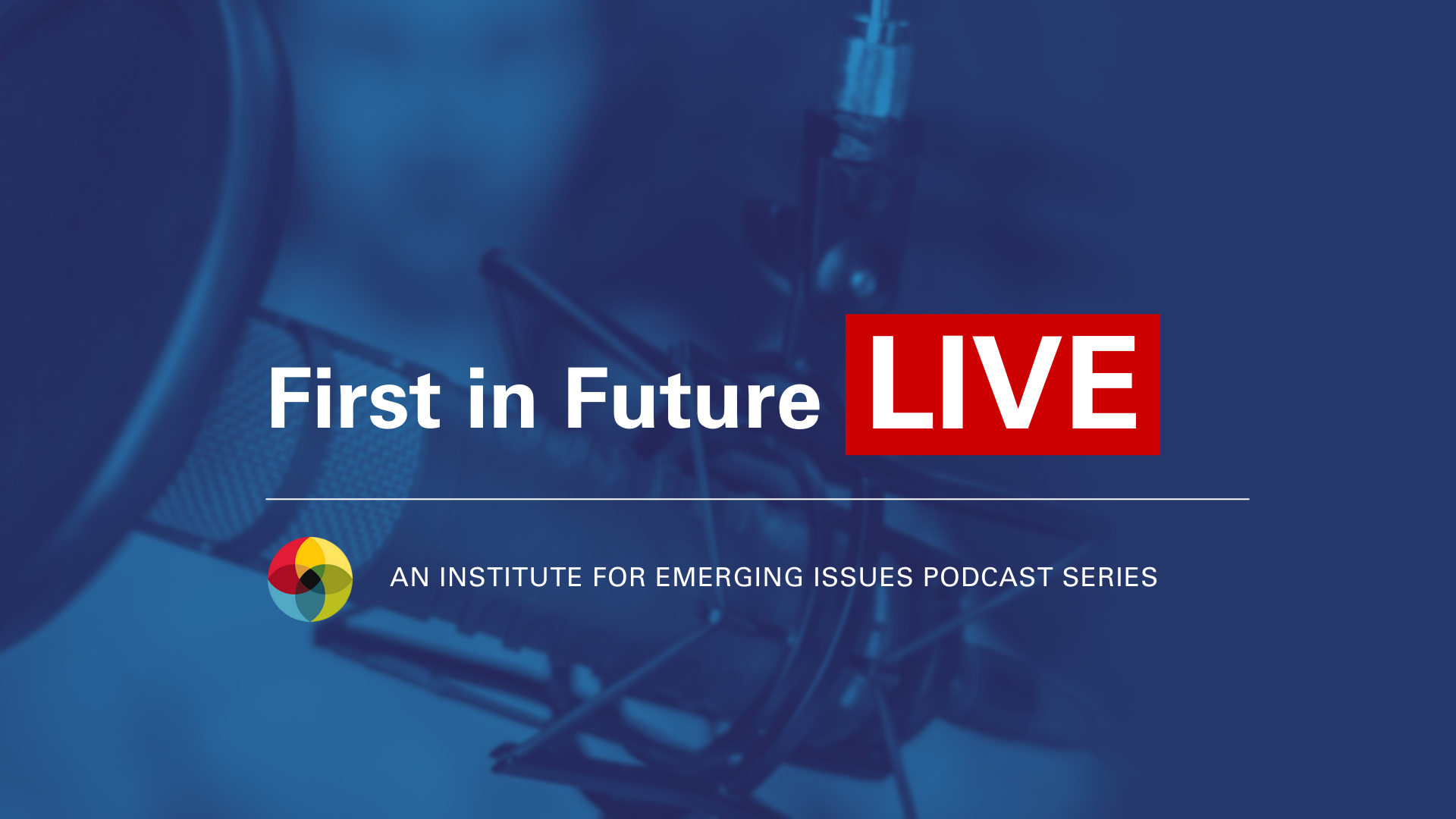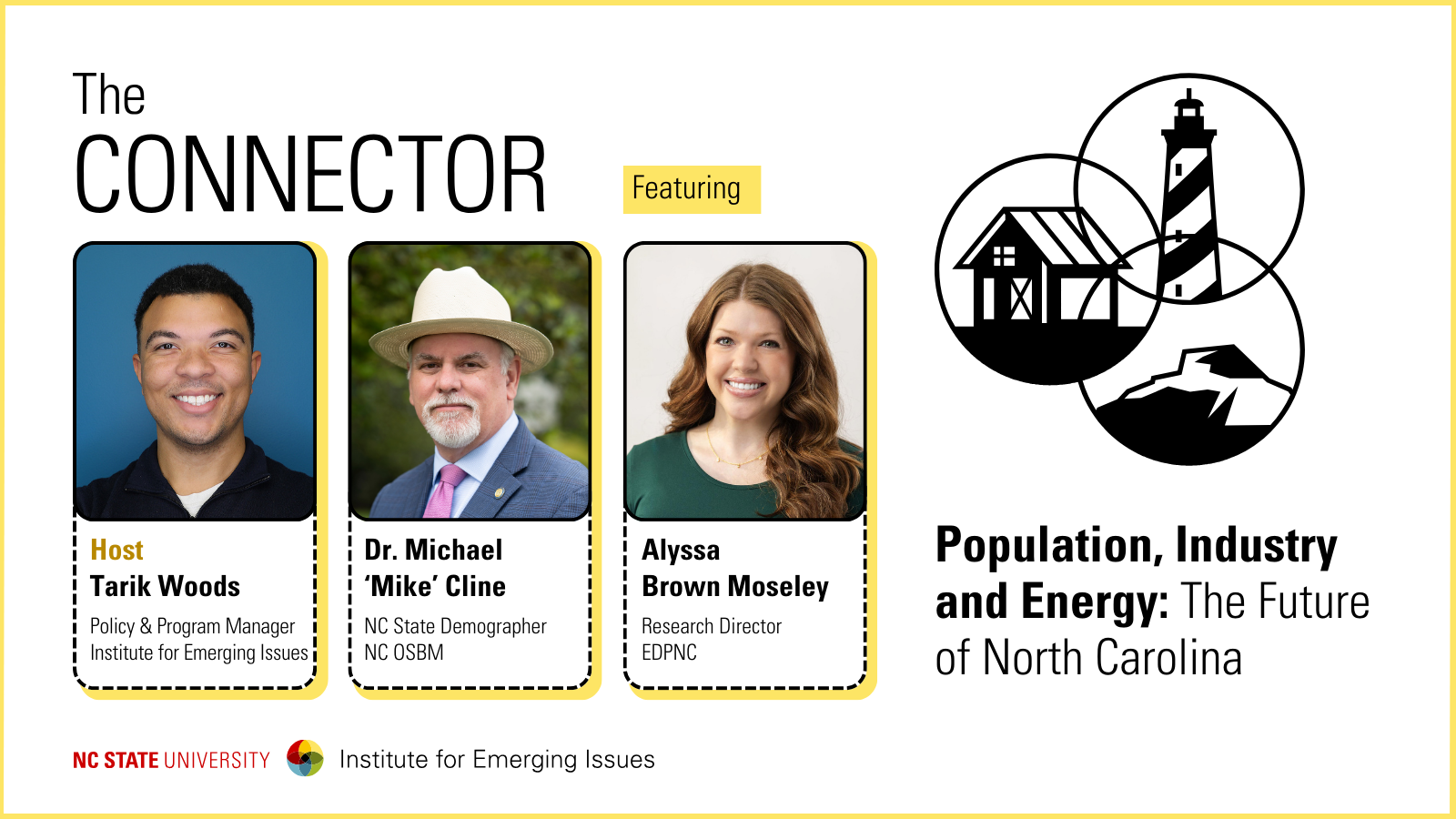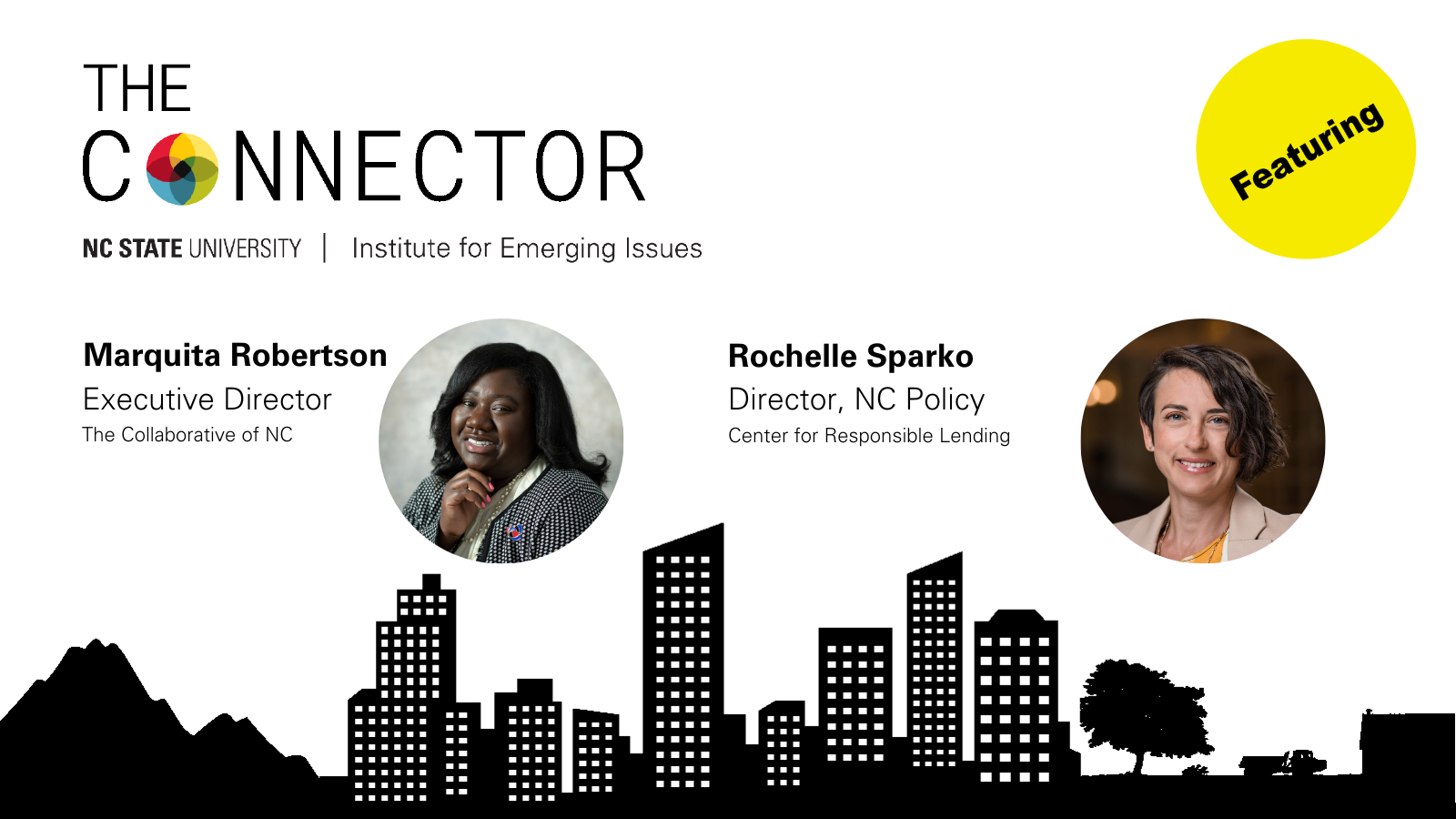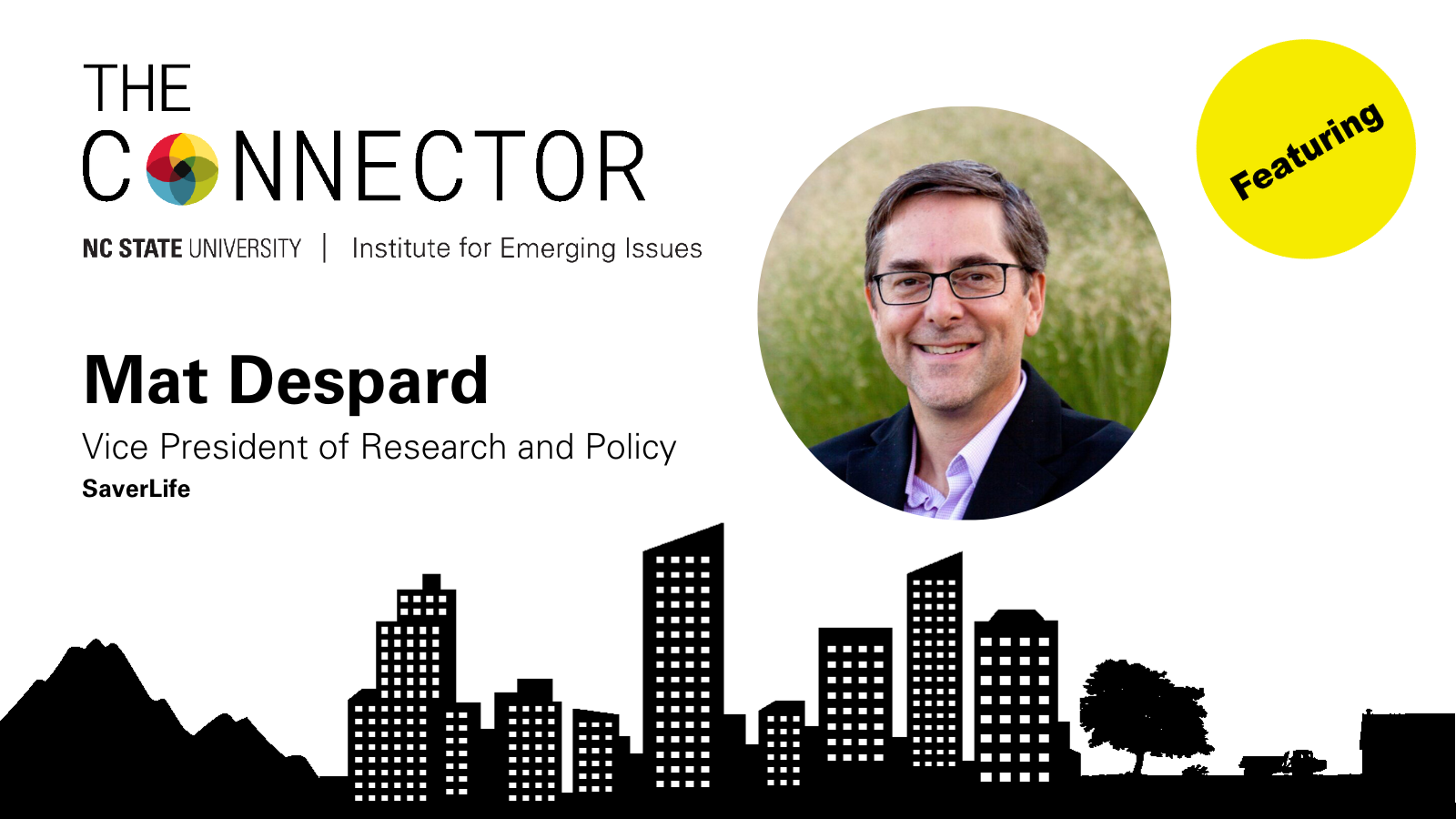COVID-19 and Child Trauma: Where do we go from here?

Summary: The Institute for Emerging Issues is hosting a series of conversations around early childhood learning focused on how we develop stronger systems in the midst of ongoing uncertainty.
This episode (COVID-19 and Child Trauma: Where do we go from here?) with guest host Patrick Cronin (IEI Assistant Director) and guests Sharon Hirsch (President & CEO, Prevent Child Abuse North Carolina), Jennie Kristiansen (Director, Department of Social Services, Chatham County) and Dr. Charlene Wong (Associate Professor of Pediatrics and Public Policy, Duke University).
*This episode of First in Future was recorded on Thursday, August 27th, and reflects information that was up-to-date at that time.*
View the slides here.
Watch Zoomcast on YouTube.
Listen to the podcast:
- COVID-19: Everyday Strategies, Sesame Street in Communities
- The resources on this page are designed to help families problem-solve, express themselves, find comfort, build resilience through transitions… and remember that challenges can make us all stronger.
- COVID-19 Parent and Caregiver Guide, Prevent Child Abuse NC
- No matter how prepared you are, a global pandemic can be stressful for anyone. Follow these recommendations to promote your family’s well-being during COVID-19
What have you been seeing in Chatham County in regards to abuse and neglect?
Jennie Kristiansen: Saw a drop in number of reports of abuse/neglect received. Trying to figure out the best way to reach people – local news ran some articles about how to get in touch. In June, reporting numbers doubled. July, back to average.
Predictions were to see an increase, but you saw a drop. What was the reason for that drop?
Kristiansen: Since schools were closed, reports weren’t coming in at the same rate. People were under stress and pressure, so it was still existing, but calls weren’t coming in. Were concerned about that, but feeling a bit better now. Anticipating a surge once kids go back to school in-person.
What are you seeing at patient/community level when it comes to abuse/neglect?
Dr. Charlene Wong: Seeing a lot of stress/behavioral issues in young people and parents/caregivers/families. Social/economic upheaval has been substantial. Burden is distributed inequitably. Been doing outreach to kids we know are at risk. Anecdotally heard bad stories early in the pandemic. Stress on families who are working, supervising children’s learning (esp. for those with learning difficulties) – as stress rises, risk of abuse and neglect goes up.
Are these stories reflected statewide?
Sharon Hirsch: Hearing similar things from all counties we interact with. Social isolation and financial stress are biggest risk factors for neglect in normal times. Concerned about inequities – families that have economic supports and connections can do better if we invest in those services/programs. Trying to educate folks about the need to reach out to friends/neighbors and importance of state/federal level supports and individual donations.
New guidelines in place to identify abuse/neglect in communities?
Kristiansen: Guidelines haven’t changed – everyone in NC is a mandated reporter. Want to make sure people know how to get help/express concerns.
Hirsch: Training available free online – how to recognize abuse and make a report: https://www.preventchildabusenc.org/online-trainings/ Also think about how to support families first before reporting to CPS.
Wong: In health care, we’re encouraging parents to bring kids in for usual check-ups/vaccines – both for good health and so we can screen for issues. In-person and telehealth.
What do we know about which populations are most impacted by abuse/neglect/trauma?
Hirsch: Disproportionately among younger children – young families early in their jobs with more financial stress, new parents. Disproportionately children of color too.
Kristiansen: Seeing a lot of the same families struggling with serious issues – what’s different is the pandemic has made access and day-to-day living more complicated. Families who have the least resources and less flexibility are most impacted by the pandemic.
Wong: Latinx community is particularly hard hit. New domain of inequities is being seen – digital divide/access to telehealth and online learning.
What are you seeing in terms of impact of pandemic on trauma across the state?Hirsch: What we can do about it – policies under consideration at the federal level (paid family leave and paid sick leave) that are important. Economic supports for food & public assistance. Financial stress can be alleviated – saw some good things with first federal relief package. Strongly encouraging our senators to advocate for those investments in families. More investment in parenting education and home visiting.
Are you seeing an increase in demand for economic assistance, indicating higher levels of trauma at the family level?
Kristiansen: Started seeing an increase in April – now back in our average fluctuations. Want to make sure people know about us and can get connected. Pushed us to look at how people can apply for an economic benefit not in-person – being creative in how people can connect with us (online portal, office drop-off box, etc.).
How have you changed your services at the patient level?
Wong: How have we not changed? Delivery of telehealth ramped up quickly. Clinics are trying to be smart about protecting staff and patients. Seeing benefits from telehealth – seeing no-show rates lower with adolescents. Still seeing digital divide with telehealth though. Behavioral health system has been good and effective at delivering services via telehealth.
How well have we done as a state responding to trauma relating to the pandemic?
Hirsch: Done fairly well. Good public education & awareness in coordination with partners (DHHS, advocacy community). Impressed by how well DSS agencies have responded/adapted. We’ll learn a lot about how we can deliver services differently – will change how we do business in the long-term.
What tools are being used to help educate people about trauma?
Hirsch: Connections Matter North Carolina initiative (http://www.connectionsmatter.org/) – to educate about intersection of brain sciences, ACES and protective factors. Now delivering over Zoom. In the training – mindfulness techniques, yoga, meditation, etc. to buffer impacts of trauma. Almost 60 communities across NC have ACES/resilience coalitions – well-positioned to help.
How do we best support children & families so rates of trauma, abuse & neglect are lowered?
Hirsch: Start by investing in them early. Increase home visiting and parenting education rates. Access to quality affordable childcare – only ~25% of NC kids can access. Economic supports for families – paid family/medical leave, paid sick days, earned income tax credit, living wages.
Wong: Hotline number for parents to identify options for childcare for kids 12 and under: 1-888-600-1685. Need to get pandemic under control, and need to reopen schools, especially for youngest kids, as soon as possible – academically, families returning to work, schools providing nutrition and safe place for children.
You and your colleagues have won 1 of 8 national grants from the federal government to do a pilot project to try to create the system we need to drive down trauma and treat it. Can you describe your project and what you hope to accomplish?
Wong: North Carolina Integrated Care for Kids model – federally funded project from the Center for Medicare and Medicaid Services (for Medicaid and CHIP insured children). Mission: partner with communities to support and bridge services where children live, learn and play. Trying to address inequities, challenges and issues that have been illuminated by the pandemic. Child-centric model of coordinating health care and social support services (child welfare, juvenile justice, schools, etc.). Model is unique because we have the authority & mandate to institute new ways for paying for this integrated cross-sector care. Project led by 3 major institutions – Duke University, UNC-Chapel Hill and NC DHHS. In planning phase now, launched at the beginning of this year. Model will go live in 2022. Not across the whole state – in 5 counties (Alamance, Orange, Granville, Durham and Vance). Pandemic hit as we were getting off the ground – thinking about how we think about trauma and inequities and rise of virtual services and how to build it into what we designed.
What are you going to do differently as a result of the model compared to the way things happen now?
Wong: Will have many different agencies and safety net services to support children. Challenge is the services are siloed. Helping families put those pieces together. Build infrastructure and capacity to have relationships and trust among the people in the different sectors. Thinking about a more holistic picture of children & families to identify and prevent children from falling “off-track.”
If all goes well and you create this system, if I’m a parent or child in those counties, how is my life going to be different as far as interacting with those groups?
Dr. Wong: Hope would be that because of the infrastructure, systems would work more effectively together. Everyone interacting with the child would have a more holistic sense of what’s going on with them. Identifying children and families who would benefit and push that resource to them. Contact Dr. Wong for more information.
- Categories:


